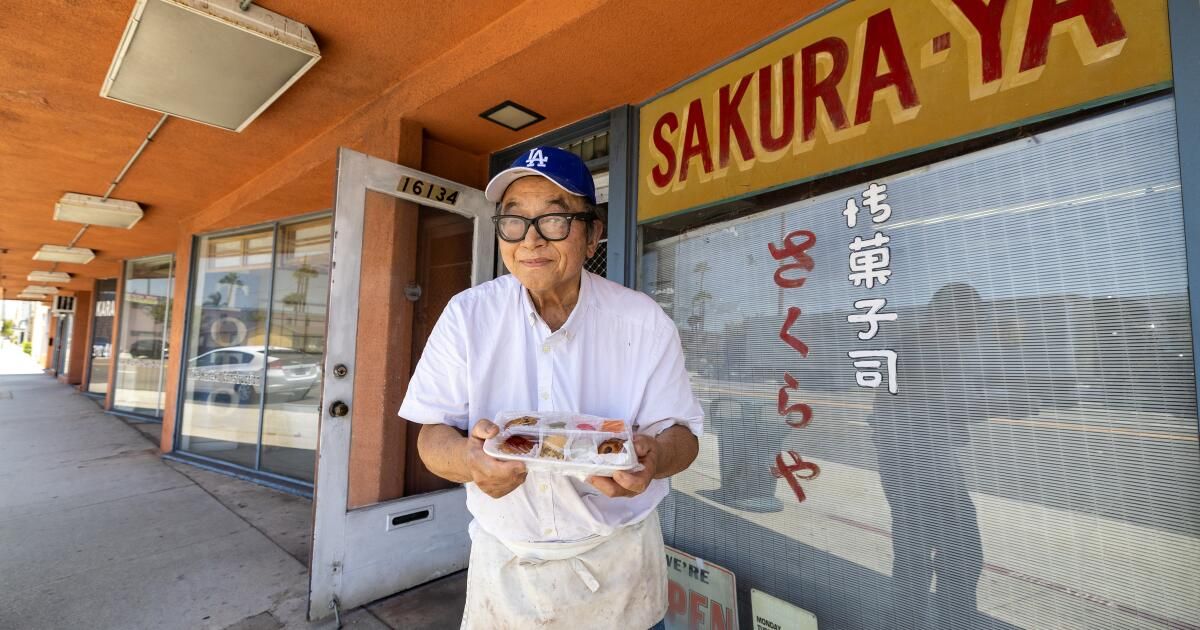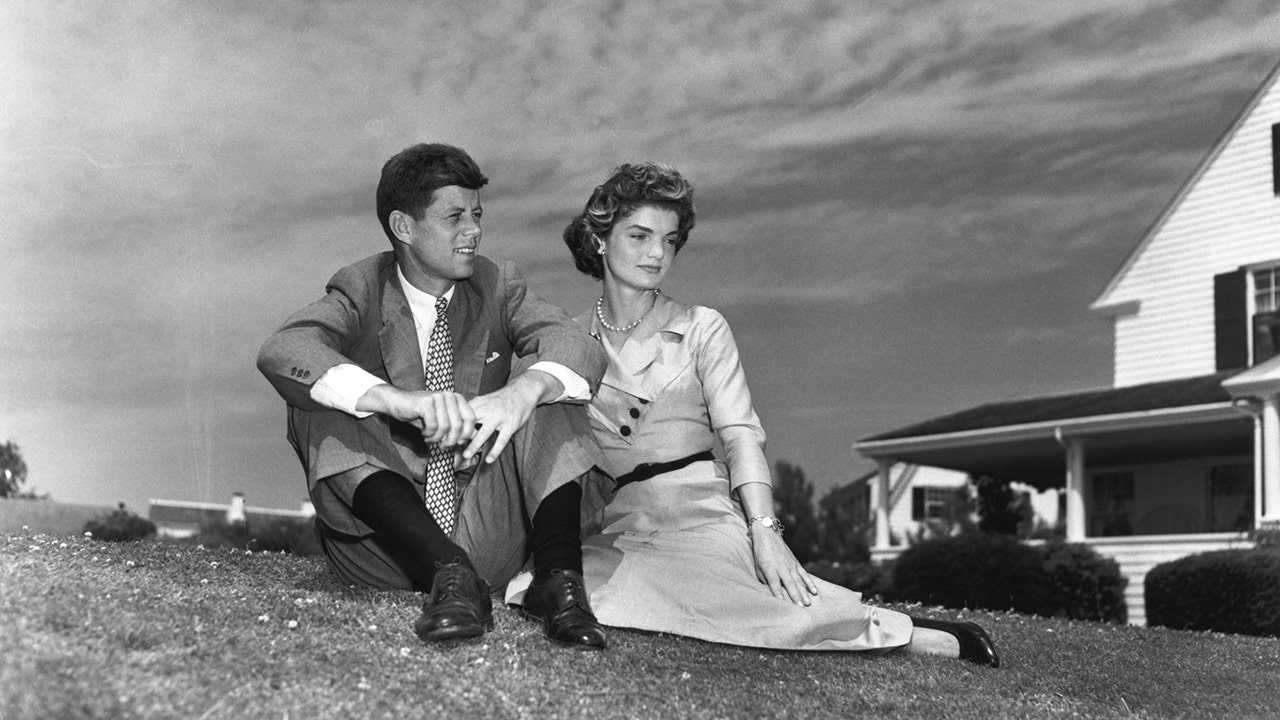Sakuraya is just one mochi shop in Gardena, if you listen to owners Mas and Yuki Fujita.
“They don't do anything different from what they do in other establishments,” insists Mas, 74. “There is no special sauce or secret ingredient hidden in the kitchen of the small one-room shop where the rice cakes and filling are made. There is no master text of Japanese baking that they consult to create their manju. Since 1960, the brothers have done what their father, Masayasu, taught them, and nothing else.”
But Sakuraya is special, if you listen to lifelong Gardena residents like Stony Furutani. For 64 years, Sakuraya's sweets have been a main draw at weddings, funerals and baby showers, a taste that marks moments worth remembering. Buying mochi or the wheat flour-based variant manju is one thing, but going to Sakuraya is a way to show another level of caring, Furutani said.
Mas makes all of the shop's mochi and bean mixes by hand. On busy days, he can start at 4 a.m. and create a thousand pieces.
(Allen J. Schaben / Los Angeles Times)
“For me, it’s a reminder of my homeland. It’s tradition. It’s culture. The fact that you went to that little shop and talked to Mas shows extra effort,” said Furutani, who created a short film about the shop for a class.
“It’s definitely what you want to bring to the potluck,” said daughter Emily Furutani. “The care and attention they put into the mochi and manju — there are really only a few places like that these days.”
Sakuraya is the only business that gets foot traffic in its low-rise shopping center in a quiet part of town. The windows are covered, and if the door weren’t open, the place would look like it had been closed for decades. Inside, there are figurines of forest animals on shelves that once housed locally made Japanese rice crackers for sale (the business closed decades ago). A small glass display case holds the mochi and manju, with all the signs and prices handwritten in black marker.
There's never a line, but tickets are almost always sold out. They've never advertised, even for free. They even turned down a spot on Huell Howser's TV show, “California's Gold,” a few decades ago. More attention means more customers, which means more work and more strain on Mas's back and Yuki's hip.
Sakuraya’s sweets have a soft, velvety texture with a filling of sweet, smooth beans. Each piece is a perfectly rounded but slightly irregular shape, and no two are alike. Mas prepares all of the shop’s mochi and bean mixtures by hand – on busier days, she can start at 4 a.m. and make a thousand pieces in one shift. It’s the beans that take the longest, as they are simmered for hours and then take even longer to cool.
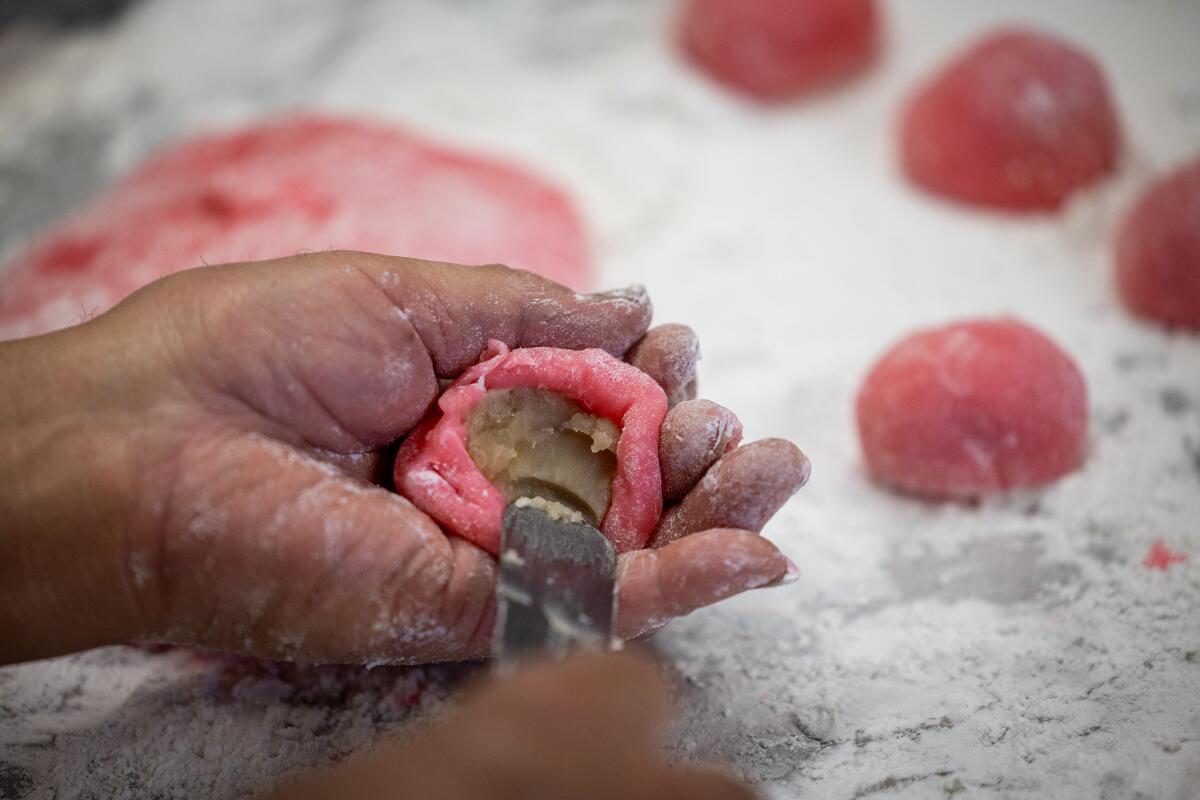
Mas and Yuki use the same tools, techniques and ingredients as their father, Masayasu. The main goal is to make their sweets taste like the ones customers remember.
(Allen J. Schaben / Los Angeles Times)
Mochi is typically made by pounding rice, resulting in a dough that hardens after a day or so. But Sakuraya uses a blend of rice flours and other starches to create a rice cake that crumbles easily when you bite into it. The resulting mochi retains its soft texture for days, which is a great benefit to customers who often take it on long plane trips as gifts for out-of-town relatives.
The brothers' only departure from tradition is their own version of maruyaki, a baked bun with a red bean filling that normally contains peanuts. Yuki, who does the baking, substituted chocolate chips for the peanuts to better satisfy sugar-loving American palates.
Last weekend, at a fundraising festival organized by the Japanese Cultural Institute of Val Gardena, everyone I spoke to seemed to have fond memories of Sakuraya.
I polled people at the bingo tables, beer garden, and lunch tables, and the consensus favorite was the pink lima bean mochi.
Alvin Takamori, a designer who runs the cash register for the plant sales, remembers Sakuraya as a special treat eaten as a family. But as the youngest child in the family, he always seemed to miss out on the pink mochi. Now 62, he enjoys buying as many pink mochi as he wants.
Sakuraya is a traditional manju shop, but authenticity is not what they are after. The last time Mas was in Japan was in the 1980s and he is not sure what techniques are popular there at the moment. Mas and Yuki use the same tools, techniques and ingredients that their father used. The main goal is for their sweets to taste like their customers' memories.
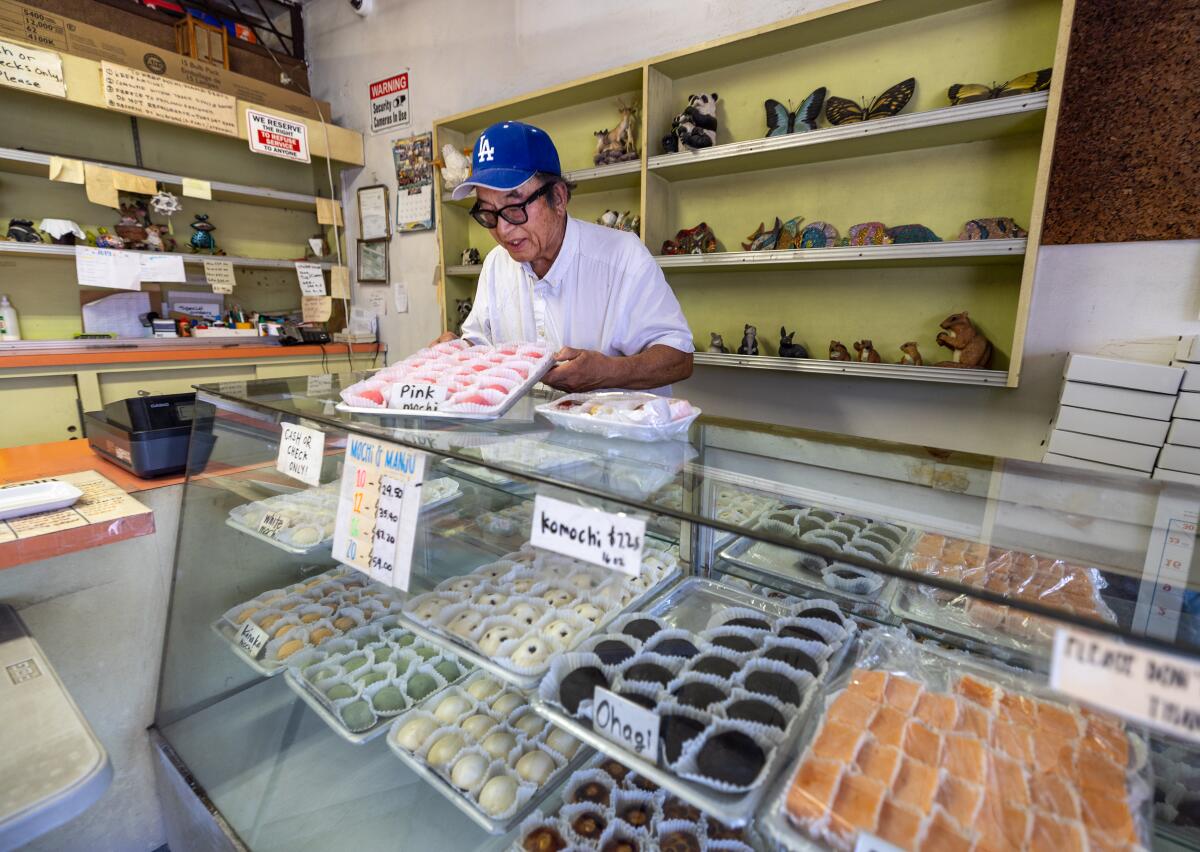
“It’s definitely what you want to bring to the potluck,” said one customer. “The care and attention they put into the mochi and manju — there are really only a few places like that these days.”
(Allen J. Schaben / Los Angeles Times)
We may never see places like Sakuraya again in this city — stubbornly human and low-tech, made special by a huge investment of time and attention. The economics of malls are changing too quickly for a business funded by a single person or a family’s income. In a fiercely competitive market, there is no room for the inefficiencies and idiosyncrasies that create places like Sakuraya.
But that was how his father taught them to do business, Mas said. In the 1950s, when Masayasu finished his training at a mochi shop in San Jose, he decided to move the family to Gardena so the shop owner who had trained him wouldn't lose business.
Chikara Mochi, another venerable Gardena institution, is just around the corner from Sakuraya. The Fujitas were close friends with the owners, Mas said, and they discussed how to avoid hurting each other's business.
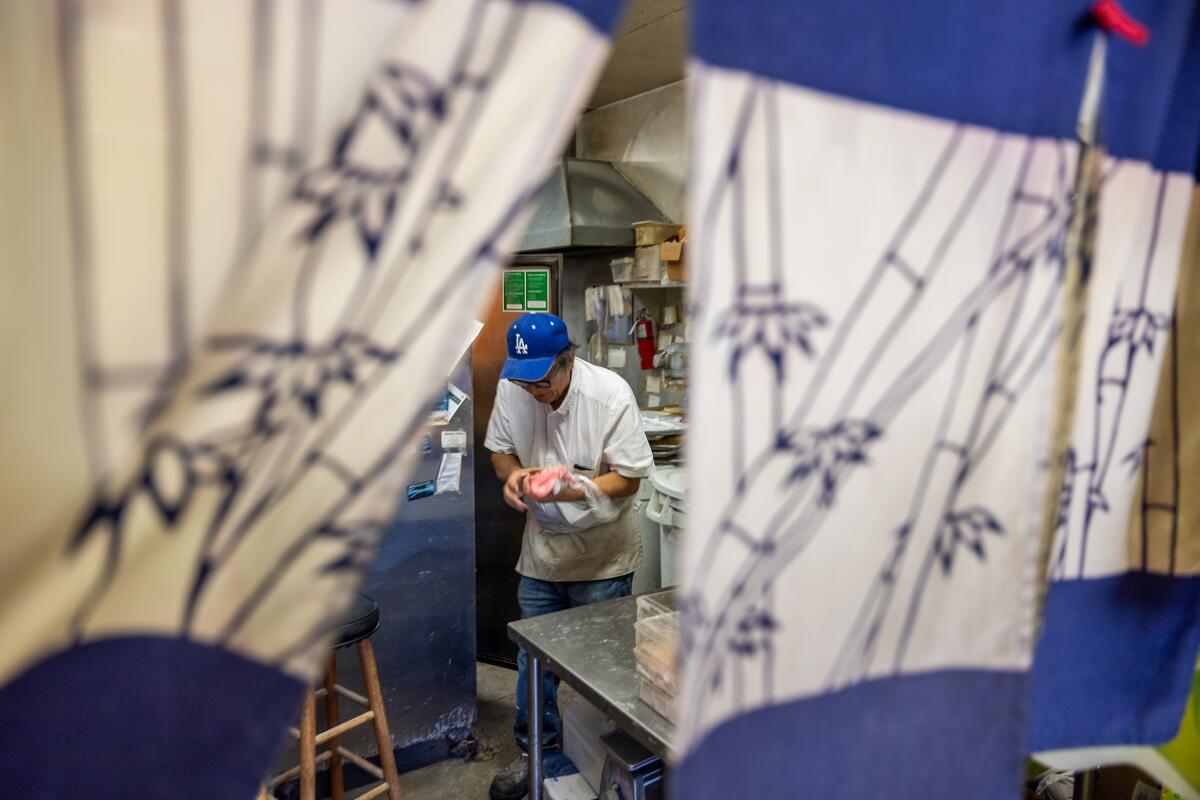
Mas and Yuki have no plans to quit or retire, but there is no succession plan. The goal was never to get rich, last forever or expand.
(Allen J. Schaben / Los Angeles Times)
Mas has worked at the store since graduating from college. Yuki joined after working as a police officer, limousine driver and manager for the U.S. Postal Service, seeking a better work-life balance.
Both brothers have lived in Gardena all their lives. Neither has plans to leave or retire, but there is no succession plan. The goal was never to get rich, last forever or expand. Just to honor their father, a Hiroshima survivor and prisoner of war who rebuilt his life in the United States.
And if they closed, many of their loyal customers would be disappointed.
Thus they will continue as long as their bodies last, silent stewards of flavors forever associated with memories of happy childhoods in Gardena.

